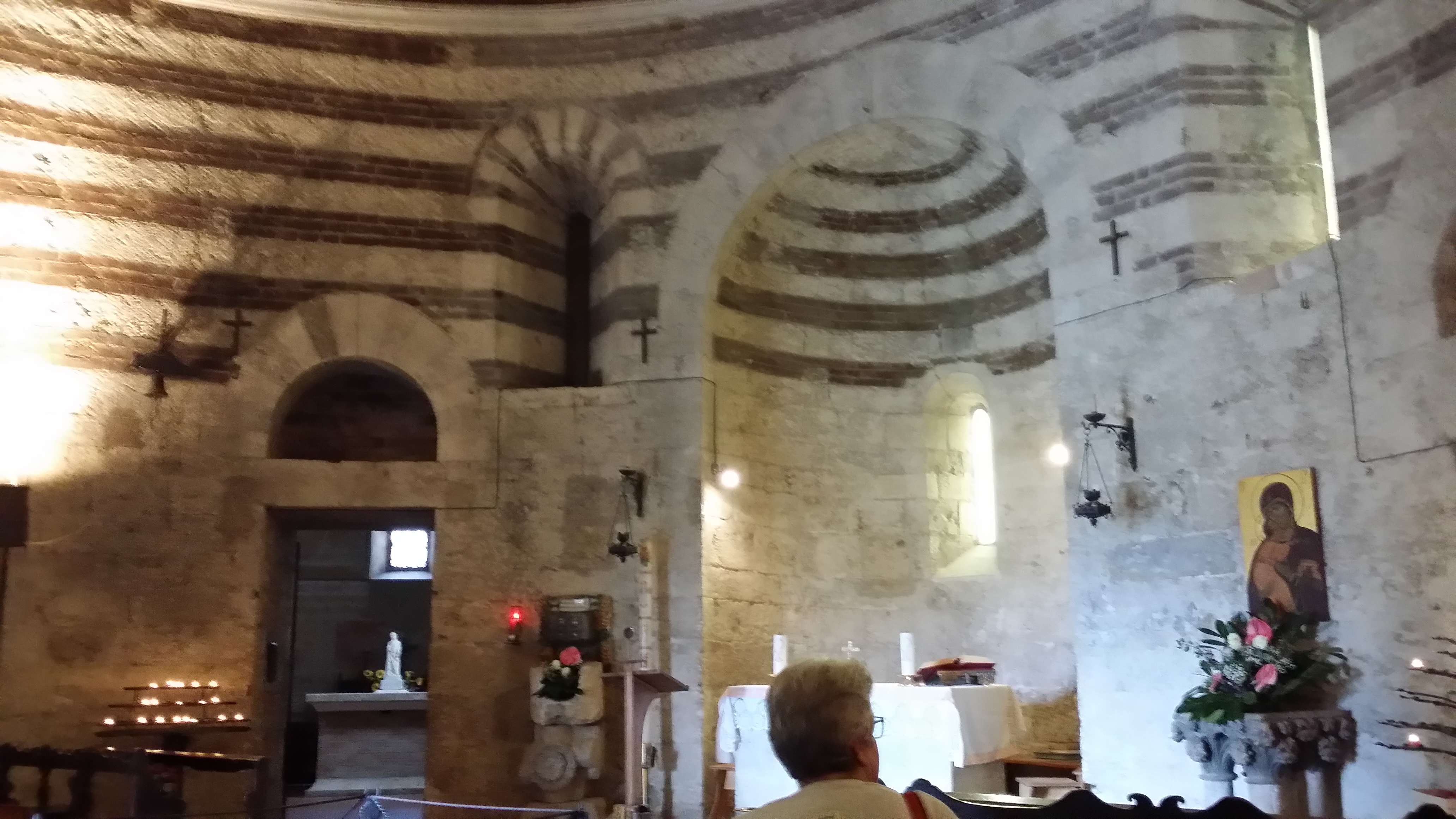
L’Eremo di Monte Siepe: Wordstall could meet here early in the new year – next January (say), as we seek to find our new axis mundi and point of balance. After all we seem to be facing eviction and need to look beyond our familiar meeting places. From Totnes to Tuscany?
Monte Siepe is a small oak wooded hill which rises out of a flat plain through which the river Merse flows in southern Tuscany about 50 km from the west coast of Italy. It is also where a man called Galgano (1148-1181) lived. He came from the nearby town of Chiusdino, and chose to retire and live as a hermit for the second half of his life close by on the hill.
For the first half of his life Galgano was a knight and presumably spent quite a bit of his time at war, fighting to keep the peace, as we now say. Then at a certain moment he decided to give up his soldier life and bury his sword, literally in a stone outcrop on the top of the hill.
So this is a sword in the stone story, but different from the King Arthur version. Having been brought to the point where he had buried his sword up to the hilt into the stone, Galgano spent the rest of his life as a hermit, practicing being at peace with himself. By contrast Arthur from the west country of England was chosen for his role by the act of drawing the sword out of the stone, and spent the rest of his life as king. Both were trying to keep the peace and spread it, it could be said.
Two ways of healing splits: Putting a sword into the stone, or drawing one out.
Of course we don’t actually know what Galgano and Arthur were really trying to get up to in their lives, and we should also probably avoid snap judgements that the way of the hermit is in every case superior to the way of the warrior king. Mostly it is romantic myth making of course.
What happened in the south of Tuscany after Galgano’s death?  A beautiful circular chapel was built on top of the Monte Siepe where the hermit had lived and at some point soon afterwards he was made a saint. San Galgano. The Cistercians then quickly arrived a few years later and set about building a huge abbey ‘L’Abbazia di San Galgano’. It took them sixty years to do it (from 1218 to 1288). All to the glory of God.
A beautiful circular chapel was built on top of the Monte Siepe where the hermit had lived and at some point soon afterwards he was made a saint. San Galgano. The Cistercians then quickly arrived a few years later and set about building a huge abbey ‘L’Abbazia di San Galgano’. It took them sixty years to do it (from 1218 to 1288). All to the glory of God.
Of course this also all cost a lot. However, it seems to have been a generally prosperous and peaceful time in this part of Italy, thanks to the influence of San Galgano we might like to think. However, another good reason was that the monks were not only adept at long-term construction projects, they also were extremely good at organising farming and agriculture, taking over land and forming numerous ‘granges’ in the plains and surrounding valley areas. And they were also good at industry smelting iron and and building other factories some to manufacture things for the new abbey like glass. And they were good at trade, using their location at an important crossroads for all routes through the Maremma as a hub for making money.
The Cistercians in fact worked more or less like a multi-national corporation does today, and used the ‘brand’ of San Galgano to maximum effect. Only the local towns-people of Chiusidino where San Galgano had come from objected, keeping their own shrine to San Galgano behind their strong town walls , and refusing to join in the pax, monopoly tax and profit system the monks were creating.
What happened after 1288? World events intervened in the following 50 years: first the plague, then famine leading on to economic and social crisis, the breakdown of law and order, and fighting. War, war, war was back again, and notwithstanding the presence of San Galgano, within a 100 years the Cistercians abandoned their abbey at Monte Siepe and went to live in Siena…  leaving the towns- folk of Chiusidino more or less exactly where they were 200 years previously.
leaving the towns- folk of Chiusidino more or less exactly where they were 200 years previously.
However, we wish to ‘read’ this story of a sword in a stone at Monte Siepe… we can look forward to drawing the parallel lines from 1288 (plague, famine, war) towards the distant horizon and vanishing points*, as we look forward to meeting here in early 2015.
* and long straight roads: I am glad to report that the roads along flat river Merse plain are mostly straight and excellent for bicycle riding, but I do advise thick woolly mittens in January.